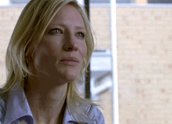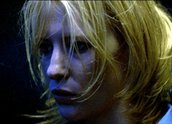


Little Fish (2005)
Synopsis
Tracy Heart (Cate Blanchett) has been off heroin for four years, when old boyfriend Jonny Nguyen (Dustin Nguyen) comes back to Sydney. Tracy is 32, living with her mum Janelle (Noni Hazelhurst) and working in a video shop in Cabramatta. Her brother Ray (Martin Henderson) sells amphetamines. The only man she has ever loved like a father, ex-rugby league star Lionel Dawson (Hugo Weaving), is hopelessly heroin-addicted. When big-time dealer Brad ‘The Jockey’ Thompson (Sam Neill) decides to retire, the decision has an impact on all their lives.
Curator’s notes
Little Fish arrived, in late 2005, at just the right time, after a couple of lean years in which Australian cinema seemed to have run out of ideas. Rowan Woods and Jacqueline Perske showed what was wrong – the film was intensely moving, dramatic and fresh, but that came out of years of research, including more than 100 hours of video-taped interviews with people just like Tracey Heart and Lionel Dawson. The film was about real people’s lives, in fact, places like Cabramatta, a notorious centre of the heroin trade in western Sydney. Very few Australian filmmakers are interested in the suburbs, as a source for dramatic stories, especially the poorer suburbs that have been transformed by mass migration since the Second World War, but Little Fish shows what we’ve been missing.
Woods grew up with strong links in Sydney’s Asian migrant communities, because both his parents taught English to migrants in the 1960s and ‘70s. In Little Fish he shows Cabramatta as a vibrant community, where heroin is only part of the story. The film is very clear-eyed about the damage the drug is doing, and the grubby politics of the trade, but it’s about much more than heroin. It’s about the choices you make in life, and the consequences. The climax of the film is an amazing scene in which Cate Blanchett convinces a man with a gun that he has a choice about what to do – and that the wrong choice will ruin his life. There’s never really been a scene like it in another Australian film, because guns once drawn tend to get used. It’s a very powerful subtle message, especially for young viewers used to violent resolutions to complex problems.
- Overview
- Curator’s notes
- Video 3 clips

- Principal credits
- Find a copy
- Make a comment
- Map
- Add your review



